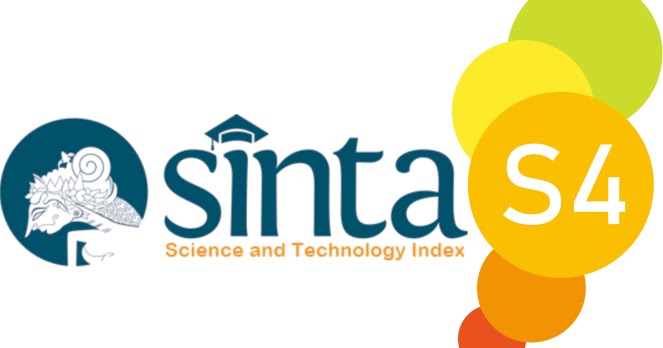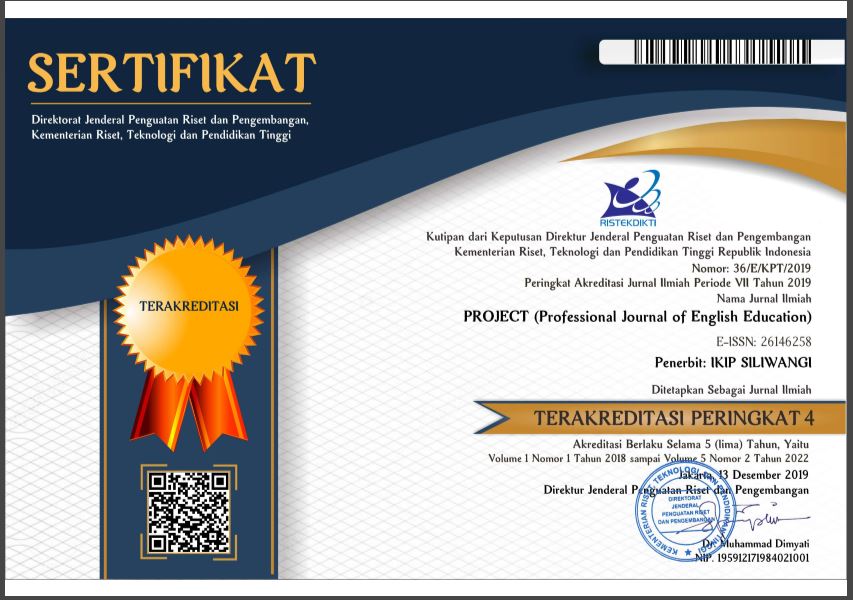Impact of Educational Youtube Videos on EFL Students' Speaking Fluency in Indonesian Secondary Schools
Abstract
Improving speaking fluency remains a challenge for EFL students in secondary schools, highlighting the need for innovative teaching methods. Fluency involves expressing oneself naturally, without frequent pauses or hesitations, and participating in conversations confidently. Educational YouTube videos, designed to teach or share knowledge, engage viewers through both visual and audio elements, making them effective learning tools. This study explored the use of YouTube videos to enhance speaking fluency among EFL students. A quasi-experimental design was employed, with 65 participants divided into an experimental group, using YouTube videos, and a control group, using educational podcasts, over the course of one month. Results indicated a significant improvement in speaking fluency, with the experimental group scoring 655 compared to the control group's 455. The findings suggest that using YouTube videos can be a more effective tool for improving speaking fluency than traditional methods. This study provides a reference for future research in the field, encouraging further exploration of innovative approaches to language teaching and fluency enhancement.
References
Anggrarini, N., & Faturokhman, I. (2021). Student’s Perception On The Use of YouTube In English Language Learning During Pandemic In Wiralodra Universiry. Journal of English Language and Language Teaching (JELLT), 5(1), 2021
Cahyana, A. A. C. (2020). The Use of Youtube video In Teaching English For Foreign Language At Vocational High School. JPBII, 8(2).
Godskesen, T., Holm, S. F., Höglund, A. T., & Eriksson, S. (2023). YouTube as a source of information on clinical trials for paediatric cancer. Information Communication and Society, 26(4), 716–729. https://doi.org/10.1080/1369118X.2021.1974515
Hasnidar, Nurhamdah, & Ismail. (2019). Improving The Students’ Speaking Skills Through 5E Learning Cycle Model At The Tenth Grade Students of SMA Negeri 3 Pinrang. Inspiring : English Education Journal, 2(2).
JASP Team. (2024). JASP (Version 0.18.3).
Jati, I. P., Saukah, A., & Suryati, N. (2019). Teaching Using YouTube Tutorial Video to Improve Students Speaking Skills. Jurnal Pendidikan Humaniora, 7(3), 101–116. http://journal.um.ac.id/index.php/jphISSN:2338-8110
Jiménez, A. G., & Vozmediano, M. M. (2020). Subject matter of videos for teens on YouTube. International Journal of Adolescence and Youth, 25(1), 63–78. https://doi.org/10.1080/02673843.2019.1590850
Lee, J. S., & Lee, K. (2019). Informal Digital Learning of English And English As An International Language: The Path Less Traveled. British Journal of Educational Technology, 50(3). https://doi.org/10.1111/bjet.12652
Litman, D., Strik, H., & Lim, G. S. (2018). Speech Technologies and the Assessment of Second Language Speaking: Approaches, Challenges, and Opportunities. Language Assessment Quarterly, 15(3), 294–309. https://doi.org/10.1080/15434303.2018.1472265
Marlina, D. S. (2021). Using Video To Improve 10th Grade Students’ Speaking Skill at State Senior High School 10 Kota Jambi. UIN Sulthan Thaha Saifuddin.
Matthew L. Maciejewski (2018): Quasi-experimental design, Biostatistics &
Epidemiology.
Namaziandost, E., Hashemifardnia, A., & Shafiee, S. (2019). The Impact Of Opinion-gap, Reasoning-gap, And Information-gap Tasks On EFL Learners’ Speaking Fluency. Cogent Social Sciences, 5(1). https://doi.org/10.1080/23311886.2019.1630150
Nofrika, I. (2019). EFL Students’ Voices: The Role of YouTube in Developing English Competences. Journal of Foreign Languange Teaching and Learning, 4(1). https://doi.org/10.18196/ftl.4138
Nurhana, & Latief, I. (2021). The Use of Relay Race Game To Increase The Students’ Performance Speaking Ability. Inspiring : English Education Journal, 4(1).
Permana, A., Arjulayana, & Almanar, M. (2021). Analysis Student’s Speaking Fluency in Speaking Class Performance. An English-Indonesian Journal for English, Education and Culture, 10(1). https://doi.org/10.31000/globish.v7i2
Smagulova, G. Z., Sarzhanova, G. B., Tleuzhanova, G. K., & Stanciu, N. (2021). The development of future foreign language teachers’ digital competences in creating multimedia tutorials. Obrazovanie i Nauka, 23(6), 216–245. https://doi.org/10.17853/1994-5639-2021-6-216-245
Soyoof, A., Reynolds, B. L., Vazquez-Calvo, B., & McLay, K. (2023). Informal Digital Learning Of English (IDLE): A Scoping Review Of What Has Been Done And A Look Towards What Is To Come. Computer Assisted Language Learning, 36(4), 608–640. https://doi.org/10.1080/09588221.2021.1936562
Syafiq, A. N., Rahmawati, A., Anwari, A., & Oktaviana, T. (2021). Increasing Speaking Skill through YouTube Video as English Learning Material during Online Learning in Pandemic Covid-19. Elsya : Journal of English Language Studies, 3(1), 50–55. http://ojs.journal.unilak.ac.id/index.php/elsya
Tri, Y., Ningtiyas, A., & Anistyasari, Y. (2020). Studi Literatur : Pengaruh Penggunaan Video Sebagai Media Pembelajaran di Perguruan Tinggi. Jurnal IT-EDU, 5(1), 417–424.
Wijaya, A. S., Suwanda, B. S., Astuti, V. F., & Siskandar, R. (2022). Literature Study: Analysis of the Use of Video as a Student Learning Media . Jurnal Sains Indonesia, 3(3).
Downloads
Published
Issue
Section
License

This work is licensed under a Creative Commons Attribution-ShareAlike 4.0 International License.




